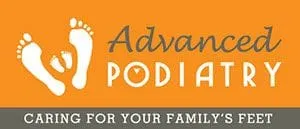Advanced Podiatry of Long Island's Blog
Health Benefits of Walking
- posted: Jul. 20, 2022
The foot is an incredible structure with 26 bones, 32 joints, 103 ligaments, and numerous muscles and tendons, each component relies on the others to work properly. One of the best Read More
Different Shoes for Walking and Running
- posted: Jul. 18, 2022
Are running shoes good for walking? Both running and walking are forward motions. For both activities you need cushion and shock absorption in your shoes. With similar movements, improper footwear in Read More
Stress Fractures - By Dr Arden Smith
- posted: May 16, 2022
Older adults are particularly vulnerable to stress fractures, or tiny cracks in the bone, because the trabeculae, the spongy tissue that connects your bodies bones, thin with age. The most common Read More
Put Advanced Podiatry on Your Diabetic Team
- posted: May 11, 2022
Two complications of diabetes are nerve damage and restricted bloodflow to the legs and feet. Both increase the risk of various foot complications. Nerve damage decreases the feeling in your feet, Read More
The Importance Of Foot Health Increases As You Age
- posted: May 02, 2022
Over our lifetime, your feet will carry you more than 216 million steps, or more than 100,000 miles. That’s a lot of time spent on your feet and, as you Read More
Mister Blister, where’d you come from?
- posted: Apr. 20, 2022
Ever had a day when you come home from a long day’s work where you’re standing for long periods of time in uncomfortable shoes and notice what appears to be Read More
Advanced Podiatry
- posted: Apr. 12, 2022
At Advanced Podiatry our goal is to keep all of our patients moving pain free. Our patients put lots of miles on their feet either while working, taking their kids to activities, Read More
Diabetic Foot Complications By Arden Smith
- posted: Apr. 11, 2022
Serious foot complications can be part of diabetes. For instance, nerve damage – or neuropathy – is a loss of sensation that can occur due to uncontrolled diabetes. Neuropathy can then result in calluses, Read More
Toe Walking
- posted: Apr. 03, 2022
Have you ever noticed your child walking around on his/her tiptoes and wondered if it’s a real medical condition needing medical treatment or if it’s “just a phase”? Or have Read More
Are Orthotics For Me?
- posted: Apr. 02, 2022
This is a question asked by many patients each day. Orthotics can solve a multitude of problems depending on each individuals needs. Many active boys and girls playing sports can develop Read More
I Think I Have a Wart?
- posted: Mar. 25, 2022
With winter almost in the rearview mirror and you’re starting to bring Read More
Spring Planting
- posted: Mar. 21, 2022
Spring planting is just around the corner. With all that bending, squatting, and digging can come forefoot aches and pains. In particular, a stubborn nerve irritation. Neuromas, or inflammation of Read More
Now is the time to clean up your nails for the summer
- posted: Mar. 17, 2022
Warmer weather is on its way and that means Read More
Playing Through Ankle Sprains Can Cause Further Damage
- posted: Feb. 21, 2022
When starting a new fitness routine protecting your feet and ankles is critical. "No pain, no gain" may be a motto for most workouts, but "too much, too soon" can lead Read More
Winter Means Dry and Cracked Skin
- posted: Feb. 14, 2022
Dry and cracked skin are two conditions most people experience on their feet when it starts to get colder. The former, worsens as you grow older; your natural oil production decreases; Read More
Super Bowl : What a game!
- posted: Feb. 14, 2022
Another exciting one is in the books. During the game there were quite a few injuries. Beckham's knee, Stafford's ankle, all bending and twisting in ways they shouldn't. Lower extremity sports injuries Read More
Contact Us
Manhasset
2110 Northern Blvd.
Suite-208, NY 11030, US

